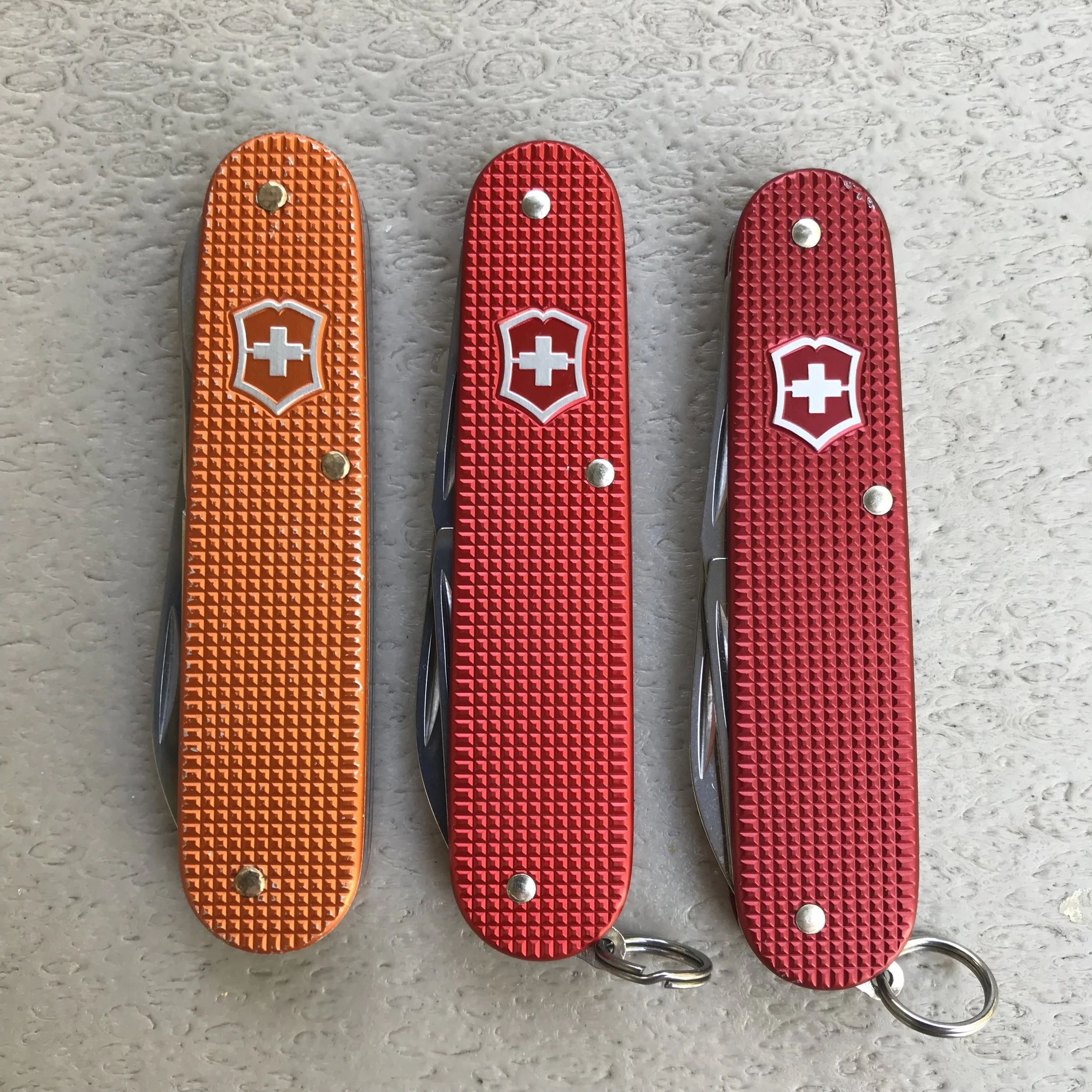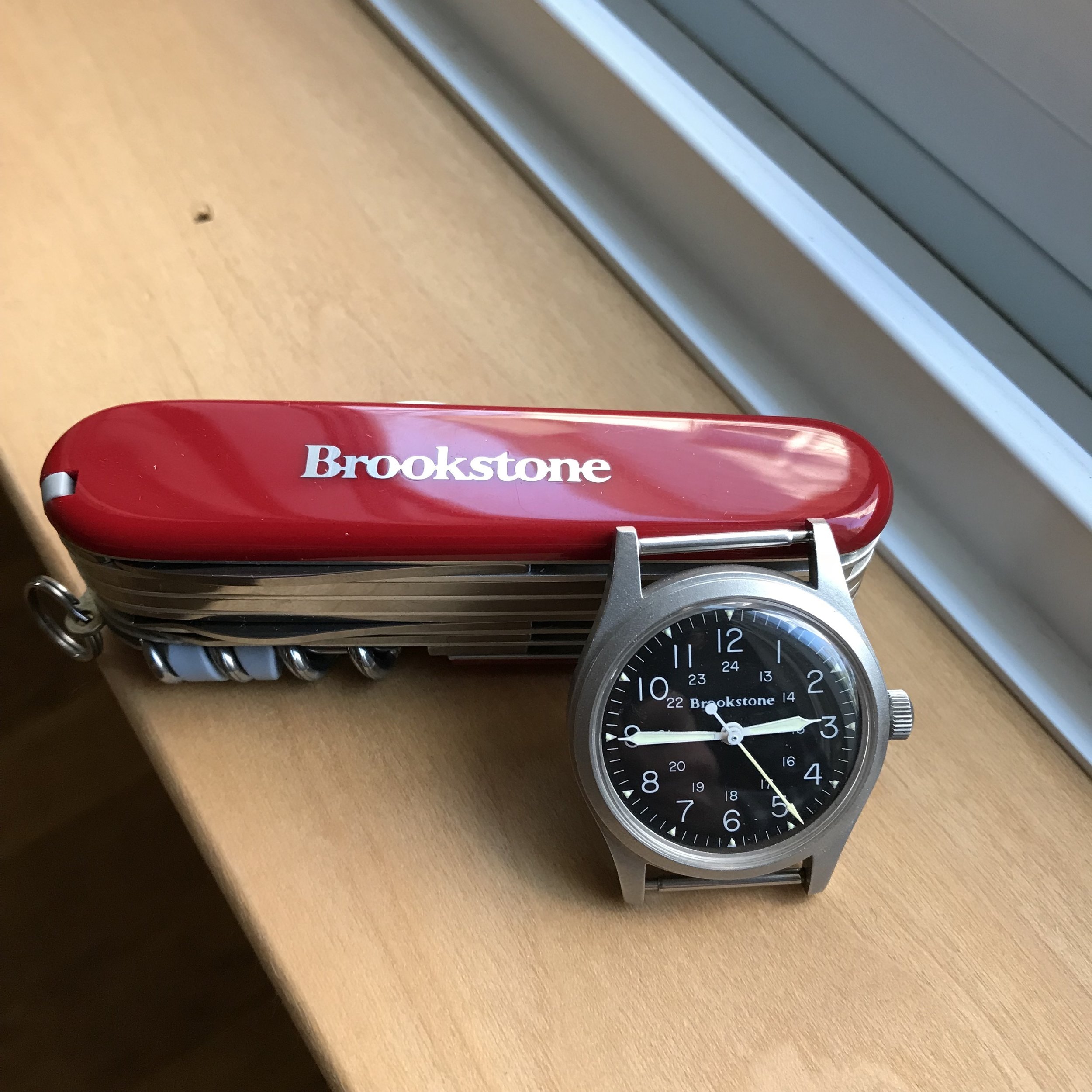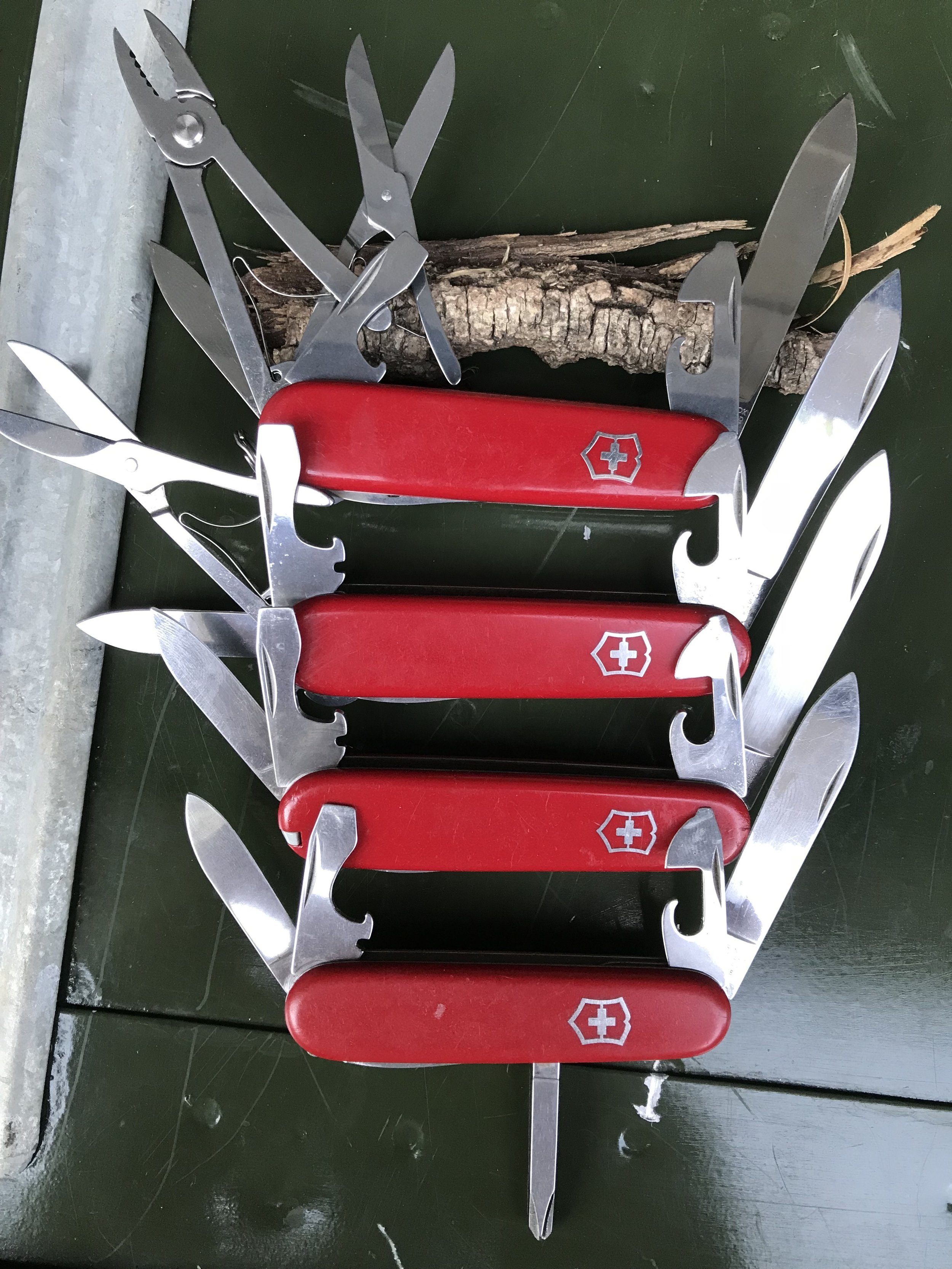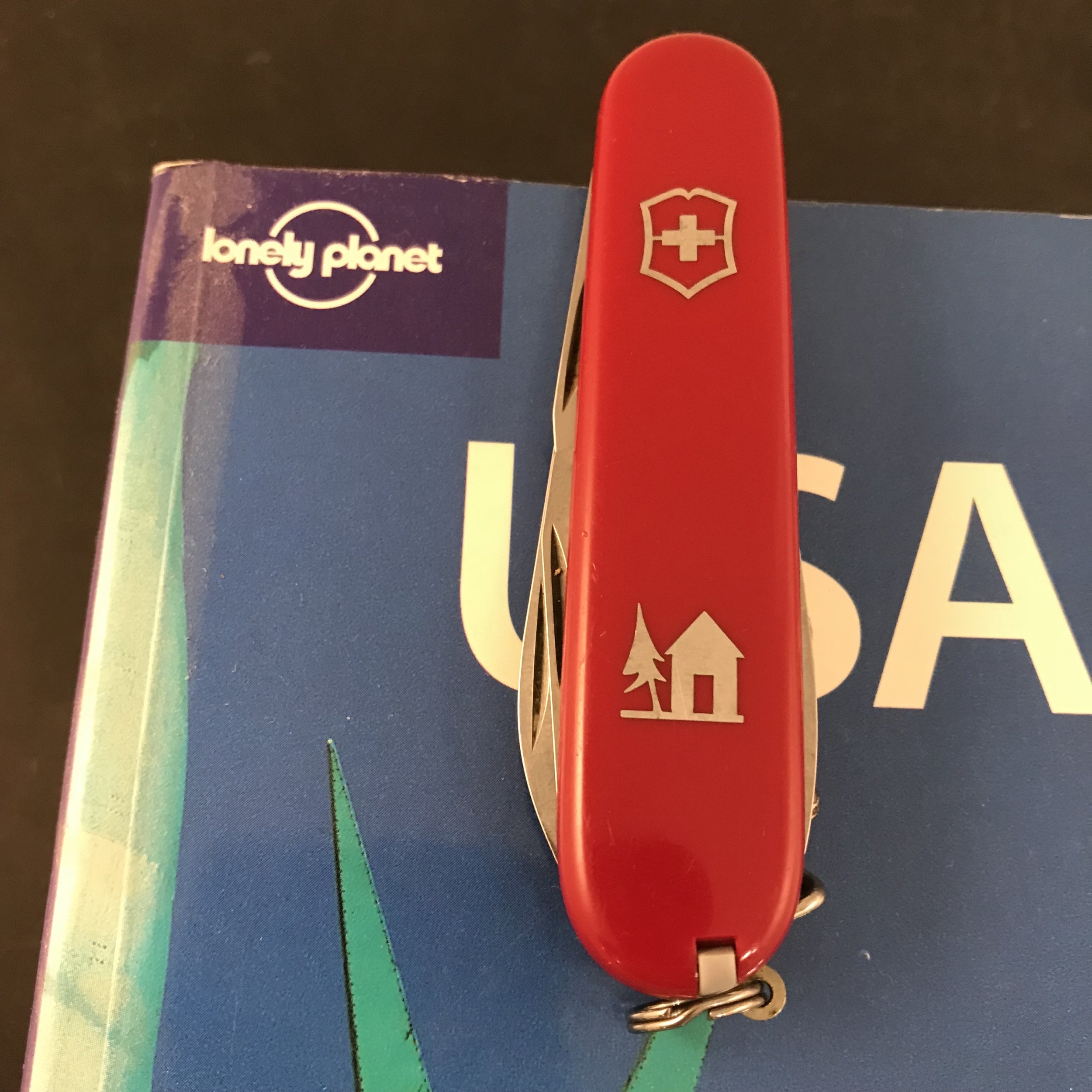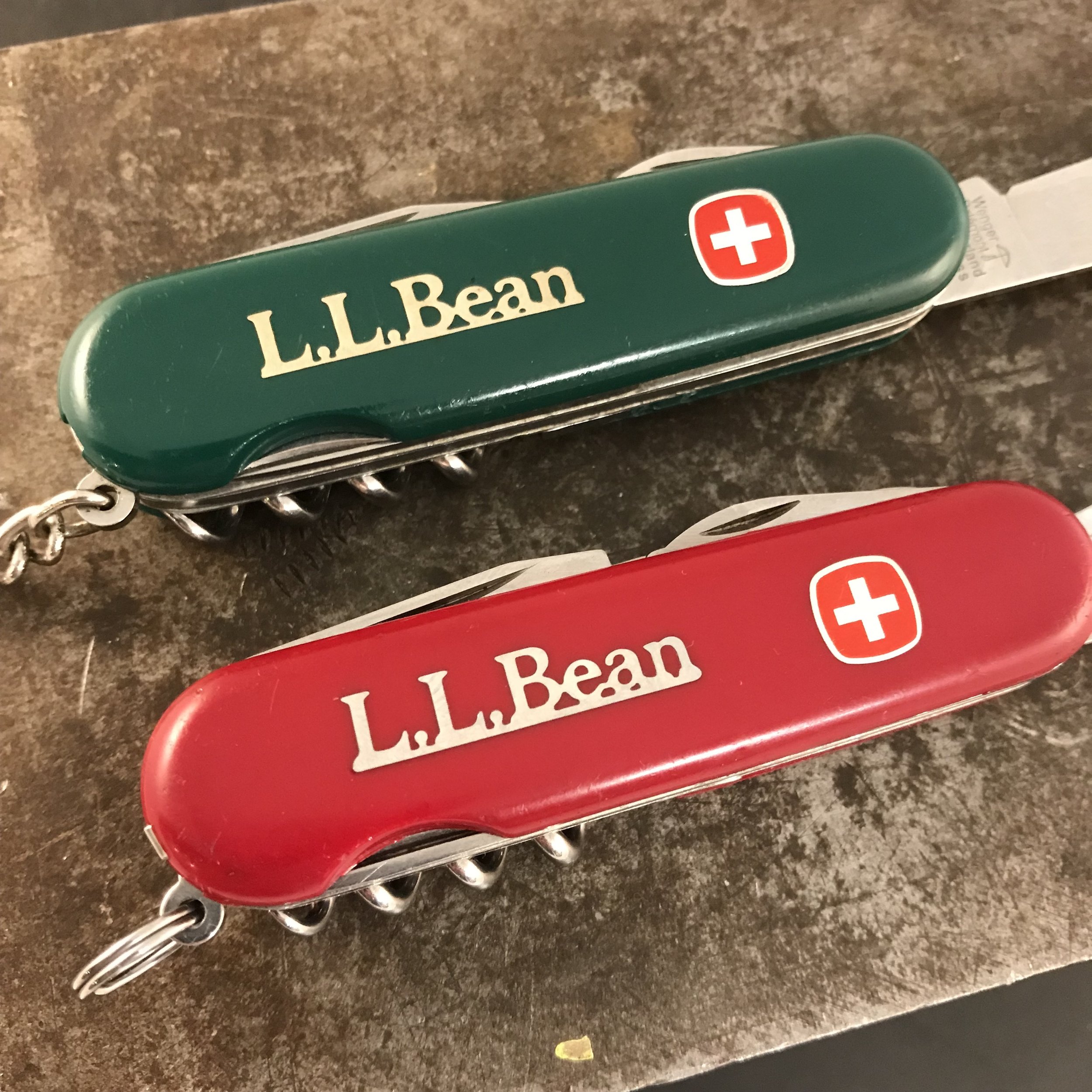Confessions of a Lifetime Accumulator: Victorinox Swiss Army Knives, Part 1.
Myron Erickson
Accumulation, differentiation, appreciation.
Watch collectors are well known for enjoying other, similar interests, and often they manifest in the same person with equal fervor. Old cars, shotguns, pens, and knives are some of the objets d'appréciation you'll find in a watch collector's garage, closet, or dresser drawer. It's not hard to see the parallels, really. Beautifully designed things with a practical or fun purpose, often hand-crafted and built in some of the coolest places in the world. The subtle variation, product evolution, and industrial design of these devices is just begging to be explored, studied, and appreciated.
For me one such fascination is the Victorinox Swiss Army Knife. I have carried one every day of my life since my freshman year of high school. Back then a kid could do such a thing and no one thought twice about it. Most boys I knew carried a pocket knife of some sort, to say nothing of the adult male role models in my life. As a young man in the late 1980's, I took four of them on a plane to England. They asked me about them at the security line and I just explained what each one was and why I needed all four. No problem; welcome aboard. But in today's world, I either mail a pocket knife ahead of myself, put one in my checked baggage, or buy a new one in my destination city if I have to. The world may have changed but I still feel naked without a VSAK in my pocket.
My first four VSAKs. L to R: 91 mm Tinker (1980), Bartender (1983), Classic (1984), and Executive (1984). I have the original boxes and sales receipts for all these knives.
This two-part post is neither a history of the Victorinox company nor a reference-quality article on tang markings, model differentiation, or implement evolution. The Internet is already loaded with good blogs that cover those details, and the SAKWiki is a treasure trove of collectively edited factual information on the topic. Rather, this post is simply the story of my own experience with the Victorinox company's SAK products and how I went from user and appreciator to accumulator and collector. Part 1 introduces you to my history and collection, and discusses some of my favorite Cellidor-scaled SAKs. Part 2 will discuss my all-time favorite models and implements, Alox-scaled SAKs, and my own limited experience with modding.
My collecting style...
A few of my VSAKs appeared in my recent post about the affordable Victorinox AirBoss Mechanical watch. They are products of density and quality, easily stored and maintained, and this means they are also easy to accumulate over time. Unlike watches, which require specialist care and expensive maintenance from time to time, the SAK requires almost nothing. Periodic cleaning with warm water, some simple blade sharpening (on carriers and users only, of course), and a drop of oil now and then. That's it. The older ones came in interesting packages that are also fun and easy to keep, and they make great family gifts and hand-me-downs. I have a family SAK that dates to the 1930's. Although I do not know its full history with my family, I don't remember a time when it was not present in my Dad's desk junk drawer.
One of the few Wenger SAKs in my collection. A family heirloom that dates to the 1930s.
Perhaps the greatest difference is the relative value of the two things. SAKs are downright affordable compared to the eye-wateringly expensive affair that watch collecting has become. Imagine yourself traveling back in time 30 or 40 years to buy one of the vintage watches you wish you could find brand new today. Not as a get-rich-quick scheme, but just because you'd really like to own that watch now. How much would it cost you today, assuming you could even find one? I'm guessing thousands, maybe even tens of thousands depending on the watch.
A Victorinox Champion with inlaid Brookstone logo. I found this knife in NOS condition for shockingly little money, and it makes a great companion to the Brookstone Hamilton field watch.
Not so the vintage Swiss Army Knife. It's not uncommon to find a 30 to 40 year-old brand-new-in-the-box Victorinox Swiss Army Knife complete with original packaging and instructions for anywhere from $50-$150. Some models are rarer and more valuable of course, but the point is that a person can build a collection for very reasonable money compared to the analogous watch collection. And if you run out of vintage SAKs to chase, you can start building your own from parts, too. The SAK modding community is active and well developed and what's more, I've found it to be a helpful and friendly community as well. But more on modding later, in Part 2.
Enough philosophy; let's talk about some actual SAKs. You'll notice that with only a couple exceptions my SAK collection consists exclusively of Victorinox products. That's because I prefer them to their closest competitor-cum-sister brand, Wenger. For non-scientific reasons, my perception has always been that Victorinox builds a superior product. You may disagree, of course, and I'd respect your opinion on the matter if we could discuss it over pints. In our pint-fueled friendly debate, you'll win points when I explain the problem that being both a Victorinox fan and an LL Bean nut presented to me historically.
Tinker evolution. From bottom to top, Tinker 84 mm (late 1970's, but I bought it in 1985), Tinker 91 mm (1980), Super Tinker (1987), and Deluxe Tinker (1988). I have the original boxes for all these knives. Note the square shanked Phillips screwdriver on the small Tinker.
Logos, symbols, limited editions.
Even people who have never really thought of a SAK as a collectible thingie can conjure an image of one with some corporate logo or other decoration on it. Back in the day, this was done very artfully by inlaying a metal logo within the scale of the knife. At some point this technique was replaced by at least two different forms of printing. And still today SAKs are also very popularly engraved with their owners' names or other words. But if these pieces are used or carried much, the printing will wear off, making them of less interest to the modern collector (to say nothing of buying a second hand SAK with someone else's name on it).
So something I keep an eye out for is VSAKs with inlaid metal logos. Prior to about 1970, these inlaid metallic graphics were nickel silver, and since then they've been made from stainless steel. The specific logo or symbol isn't always of interest of course, but sometimes you find one that just fascinates you even if it doesn't have specific meaning to you. Take my Youth Hostel Association of Australia knife for example. I just love the cartoony pine tree and house logo. With just these two very simple shapes it gets its message across -- travel and adventure are fun and valuable experiences. So even though I was never a member of this organization, I still think the knife is cool. And it cost me all of 10 bucks.
A Spartan with the Youth Hostel Association of Australia metal inlay. I love this logo.
Here's another fun one. About 20 years ago, where I worked at the time, I was given a handful of VSAKs by a visiting sales engineer. They featured a very prominent corporate logo inlaid into the scales. I brought them home and made up a story about the name, ISCO. I mean, who hasn't heard of the "International Society of Canoeing Outfitters?" I gave one to my dad, brother, nephew (who was 9 at the time), and I have a spare stashed to give to my own son when the time is right some day. We had paddled into the middle of the Canadian backcountry that summer, and I made up an indoctrination ceremony culminating in the presentation of the "official" ISCO knife.
A pair of Recruits with "International Society of Canoeing Outfitters" inlaid logos.
Earlier I alluded to the conflict that the Bean customer and VSAK fan can identify with. If you like your SAKs with inlaid logos as opposed to cheaper, printed logos that will eventually wear off given enough pocket time, your option in a 1970's-80's LL Bean catalog was the Wenger Swiss Sportsman. Because I was a Victorinox snob, one of these very reasonable pocket knives never landed on my Christmas list. I wish it had. I've recently gone back and picked up a couple of these and find them to be delightful in every way. My green-scaled specimen is old enough that its inlay appears to be nickel-silver as well. The blades lock for safety, and Wenger scissors have always been an interesting and robust design.
A pair of Wenger Swiss Sportsman SAKs. This model was unique to LL Bean and came in black as well.
But lately it seems as though Victorinox has maybe developed a more durable way to put a logo into the cellidor plastic of a SAK scale, as opposed to merely printing it on the top surface. I can't explain this to you, but I've relaxed my previous standards and have been enjoying the limited edition VSAKs from LL Bean in the last few years. They've made a couple whimsical designs and reproduced some older corporate logos that are fun to see on a knife handle.
Recent LL Bean special edition VSAKs. Top row L to R: dark green Spartan with a whimsical tree and tent logo, red Climber with Classic logo, green Super Tinker with Heritage logo. Bottom row, L to R: Camper with Katahdin logo, Hiker with Heritage logo against plaid scales, and an olive green Classic featuring the Heritage logo.
Other outdoor retailers sold Victorinox and Wenger SAKs with their own logos appearing in inlaid metal. Eddie Bauer, EMS, and REI are a few I've seen, and I find a certain charm and nostalgia to them. As my author friend, Jason Heaton, has said about similarly co-branded wristwatches from the 1970's and 80's, "These are [things] from an era when you waited for film to be developed, had to flip a record over after five songs, and you ordered your down jacket using a paper form out of a catalog and waited a couple weeks to get it."
Official Boy Scouts of America VSAKs.
Some of my favorite VSAKs are those produced for the Boy Scouts of America. When my own lad was a Cub Scout I found him a Pocket Pal with the Cub Scout logo. It was his first real pocket knife. When he crossed over from Cub Scouts to Boy Scouts I got him a brand new BSA Climber with glow-in-the-dark scales. And when he Eagled I found a new old stock Huntsman with inlaid BSA logo, still in its original box with its original instruction manual (it's really a Fieldmaster, but that's its own Victorinox mystery).
Tangible and useful artifacts from a boy's Scouting career.
Finally, to thank the two men who had been his Scout Masters all those years, I searched and searched until I found two Recruits with the Scouter inlaid logo. These date from the late 1970's and are difficult to find, but I managed to find two, the second one just in time.
The super-rare Scouter VSAK Recruit. I made shell cordovan pouches for these knives, which my son and I gave as gifts to his Scout Masters.
Victorinox inlays.
Victorinox's own inlaid knife logos are fun to keep an eye out for as well. The company has used a wide variety of inlaid metal graphics to spark inspiration in a particular activity, hobby, or interest, and hence in their products. Other knives observe important milestones in the company's history.
This 84 mm Tinker (top) is celebrating the centennial of the Victorinox company. The Spartan (bottom) observes the 100th anniversary of the Officer's Knife.
In the early-to-mid-80's, Victorinox discovered that NASA had issued their Master Craftsman SAK to all its space shuttle astronauts, but they did it without any consultation with Victorinox. When the company inquired, NASA replied saying that although they did not endorse the product, it was in fact standard issue to all its astronauts. To celebrate the occasion, Victorinox issued the Master Craftsman with a special space shuttle inlaid logo.
The Angler and Fisherman both used the fish inlay over the years, and the tools appearing on the knife varied and evolved with time. I've always thought the fish itself was kind of a strange image, looking more like some kind of cave art depiction of a fish than an actual fish. But this inlay is a famous one, and has been used on VSAKs for decades. Of course the knife featured a fish scaler implement among its tools.
The tent and "Camping" logo is another famous inlay which has been used on several different models of VSAK over the years. My specimen is an actual Camper model. If you shop for one of these, be aware that this logo is more commonly seen today in its printed variety. There are numerous other Victorinox inlays that I'm always on the lookout for, some of which are quite rare and valuable. Others are very easily found and affordable. For example, the most casual perusal of eBay will always produce a well-loved Camper for around ten bucks.
L to R: Master Craftsman with space shuttle inlay, Fisherman with fish inlay, Camper with Camping inlay.
Accumulating Swiss Army Knives is proof that collecting well-made, practical things from Switzerland need not be an expensive endeavor. The interest in them for me has lasted my entire life, from age 13 or thereabouts to today. There are ample supplies, a well-developed collecting community, and lots of good references to consult. I hope you enjoyed reading Part 1 of this post, which I will conclude here.
Are you a SAK collector? Have some interesting observations to share? Please leave your comments below, and thanks for reading my blog!
